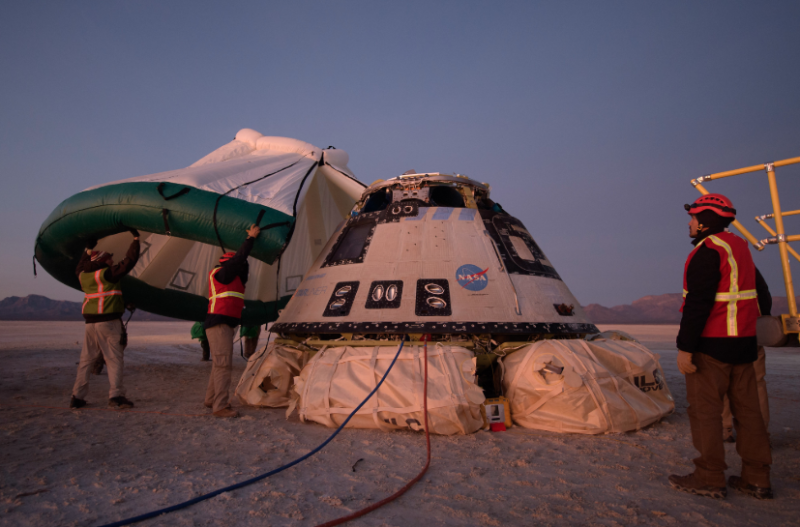Latest News

The Boeing CST-100 Starliner spacecraft after its landing on Dec. 22, 2019. Photo: NASA/Bill Ingalls
NASA and Boeing’s major reviews of the company’s uncrewed Orbital Flight Test in December 2019 has concluded with 80 recommendations. The December flight test experienced an intermittent space-to-ground communication issue, and the spacecraft was not able to execute the orbital insertion burn required to meet its testing objective of docking with the International Space Station (ISS).
In a Tuesday release, NASA detailed five categories of corrective actions that the recommendations fall under: 21 testing and simulation recommendations including the need for greater hardware and software integration testing; 10 software recommendations including an assessment of all software requirements; 35 recommendations for process and operational improvements; 7 software recommendations including updating the software code and associated artifacts; and 7 knowledge capture and hardware modification recommendations such as organizational changes to the safety reporting structure. Action plans for each recommendation are underway.
In addition, NASA also executed a high visibility close call investigation to review organizational factors within NASA and Boeing that could have contributed to the flight test anomalies. That team developed six recommendations for the NASA Human Exploration and Operations Mission Directorate, including a requirement that systems engineering management plans delivered by contractors contain specific requirements related to the contractor’s management approach.
In April, Boeing announced its plans to fly a second orbital test at no cost to the government to demonstrate Starliner docking to the space station. Boeing and NASA have not yet established a launch date for Orbital Flight Test-2 (OFT-2).
“I can’t stress enough how committed the Boeing team has been throughout this process,” said Phil McAlister, director of commercial spaceflight development at NASA. “Boeing has worked collaboratively with NASA to perform these detailed assessments. To be clear, we have a lot more work ahead, but these significant steps help us move forward on the path toward resuming our flight tests.”
Get the latest Via Satellite news!
Subscribe Now